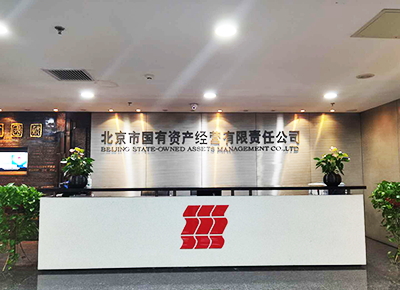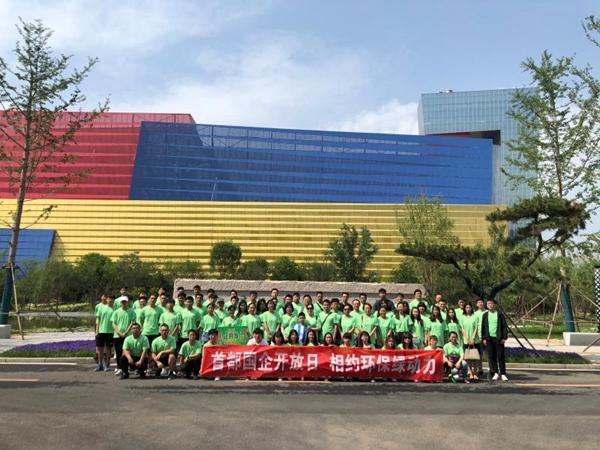In August 2008, the Olympic Flame was lit in Beijing. Jacques Rogge, the then President of International Olympic Committee (IOC), commented: “These were truly exceptional Games!”. People all over the world fixed their eyes on the iconic venues of the Beijing Olympic Games, such as “Bird’s Nest” and “Water Cube”. China created miracles to the world. 11 years later, how about the post-Games operation of these glorious Olympic venues?
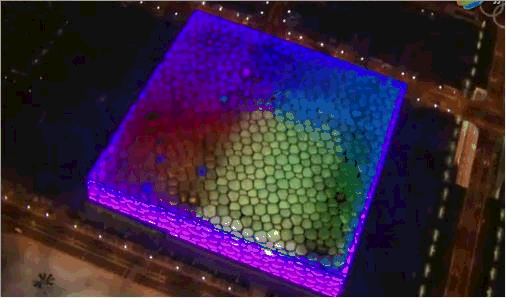
With retrospect to the whole history of the Olympics around the globe, the huge and beautiful Olympic stadium is almost a unique label for every Olympics. However, due to tremendous size, high maintenance cost, difficulty in function development and low utilization rate, the post-Games operation of the Olympic venues is acknowledged as a world-class problem. As host cities of the Olympic Games as are concerned, the Olympic Stadium, the main venue of the 2004 Athens Olympic Games, is seriously idle so that its high maintenance cost has become a heavy burden on the local government. Maracanã Stadium, the main venue of the 2016 Brazil Olympic Games, falls into poorly maintained and abandoned status. For more than a year after the end of the 2018 Pyeongchang Winter Olympics in South Korea, many local stadiums have been empty. The so-called “Post-Olympic Phenomenon” has deteriorated into a vicious circle in the history of the Olympics.
As the builder and operator of “venues for both Summer and Winter Olympics”, within the cycle of the 2008 Beijing Olympic Games, BSAM fulfilled investment, construction and Games-support tasks of five major Olympic venues at a high level: Beijing National Stadium, Beijing National Aquatics Center, Beijing National Tennis Center, Hockey Field and Archery Field. In the post-Olympic era, it has undertaken the post-Games operation and comprehensive utilization of Beijing National Stadium and Beijing National Aquatics Center. As a large-scale comprehensive investment conglomerate, BSAM upholds the business philosophy of “Social Benefit First and Orientation to Economic Benefit”, injects more cultural, sports, financial, venture capital and other resources into the development of Olympic venues, and helps Olympic venues embark on a broader development paths by means of diversified operation, and thoroughly demonstrates the core values of Olympic venues in serving China, serving the society and serving the people. BSAM blazes a trail in the post-Games operation of Olympic venues at home and abroad, sets a benchmark and creates “Chinese Experience”. Jacques Rogge and Thomas Bach, both IOC Presidents in succession, speak highly of the post-Games utilization of “Bird’s Nest” and regard it a model of post-Games utilization of large-scale international Olympic stadiums. Rogge hails “Water Cube” as “the Olympic natatorium with the most complete facilities, the highest degree of openness and the best operation effect”.
Diversified Operation Enhances Sustainable Development Capacity
“Realizing the Olympic Dream with Architectural Miracles, and Embellishing Global Brand with Cultural and Sports Industry”. Guided by the overall idea of “Government Leadership, Social Participation and Enterprise Operation”, “Bird’s Nest” and “Water Cube” explore for comprehensive market-oriented operation, and establish close partnerships with many international sports organizations and well-known sports operator institutions. Boasting the first-class venue facilities and favorable advantages in terms of service and operation, “Bird’s Nest” and “Water Cube” emerge as professional venues for top-grade sports events, such as the Italian Super Cup, South American Super Derby Cup, London Super Derby Cup, other top international football events, FIS Snowboard Big Air World Cup, FIS Freestyle Aerials World Cup and other matches are consecutively held in “Bird’s Nest”. International high-level individual events of swimming, diving and synchronized swimming, organized by FINA, come one after another in “Water Cube”.
“Bird’s Nest”
FIS Snowboard Big Air World Cup
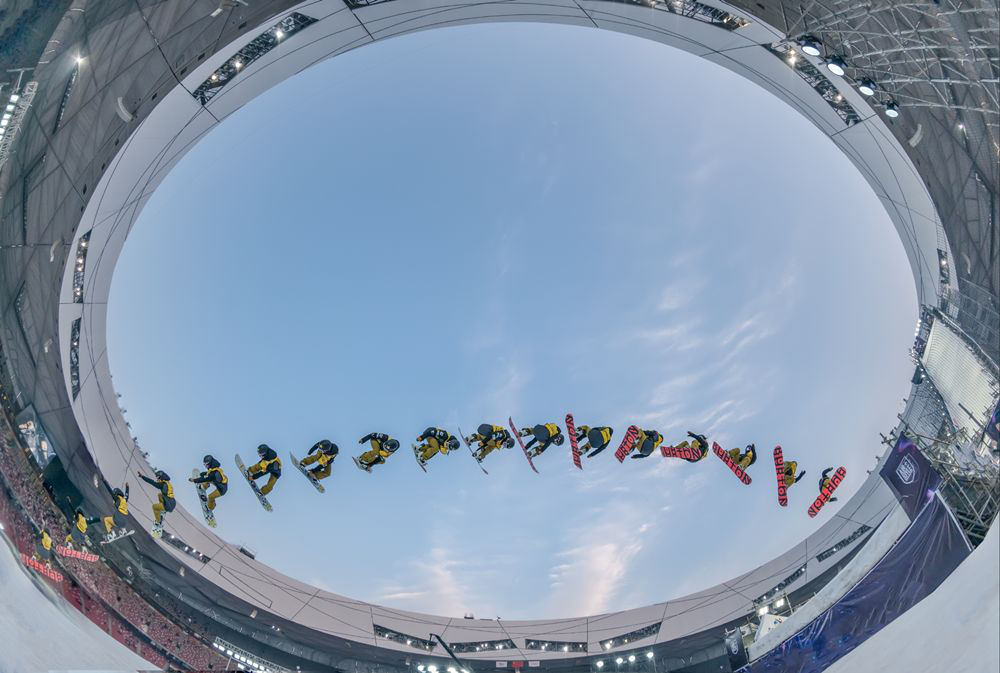
“Water Cube”
FINA Diving World Series
In the context of large-scale international sports events on the upsurge, “Bird’s Nest” and “Water Cube” vigorously introduce cultural performances in various forms, facilitate youth events and public welfare activities, foster independent brand projects, strengthen the development and management output of intangible assets, shape up comprehensive business framework composed of large-scale event, tourism service, commercial development and other elements, and achieve diversified development.
Driven by innovation, “Bird’s Nest” and “Water Cube” also continuously grope for extended forms of brands and functions, and promote the integrated development of sport, culture, creativity, finance and high-tech. Bird’s Nest Culture Center, inaugurated in 2015, is not only a public cultural space in the capital city, but also is incubating entrepreneurship and innovation projects of cultural and sports industry, unswervingly climbing for the peaks of cultural and sports industry in the post-Olympic era, and blazing a sustainable development path for architecture and urban space.
Bird’s Nest Culture Center
Beijing National Aquatics Center makes full use of abundant venue functions, continuously improves the quality of service, attracts numerous cultural, artistic and fashion activities, and transforms into the all-inclusive “Water Rubik’s Cube”.
Huabiao Awards Ceremony 2018 was held in “Water Cube”
By the end of 2018, “Bird’s Nest” and “Water Cube” greeted more than 56 million Chinese and foreign tourists and visitors, and arranged for more than 3,400 matches, performances, exhibitions, shows and national fitness activities. Both emerge as the most successful and dynamic post-Olympic venues after face-lifting. Annual operating income entirely covers operating costs (such as fixed asset depreciation, operation and maintenance expense, sales expense and management expense). “Bird’s Nest” and “Water Cube” not only take pride in independent profitability for many years, but also exemplify the sustainable development of the Olympic venues.
Contribution to Functional Construction of Beijing as “Four Centers”
For symbolic venues of the Beijing Olympics, it is a business philosophy of BSAM for permanently integrating Summer/Winter Olympics legacies into the development of Beijing, an international metropolis. “Bird’s Nest” and “Water Cube” are increasingly serving as important windows to shed light on the image of China and the rapid development of Beijing with each passing day.
It is a grand mission for personnel of “Bird’s Nest” and “Water Cube” to render services and supports for major national-affairs events and international events. In November 2014, the heads of state, who attended the 22nd APEC Economic Leaders’ Meeting, felt amazed at an elegant international feast in “Water Cube”. In August 2015, World Athletics Championships brought together nearly 2,000 athletes from 207 countries and regions in “Bird’s Nest” to compete on the same arena. In May 2019, as one of the highlights of the Conference on Dialogue of Asian Civilizations, Asian Culture Carnival met with a great success in “Bird’s Nest”, which was presented as a cultural gala characterized by exchange between Chinese and foreign civilizations, blend of multiple cultures and happy gathering of people from many countries. This resounded cadenzas for Beijing to develop into Political Center and International Exchange Center.
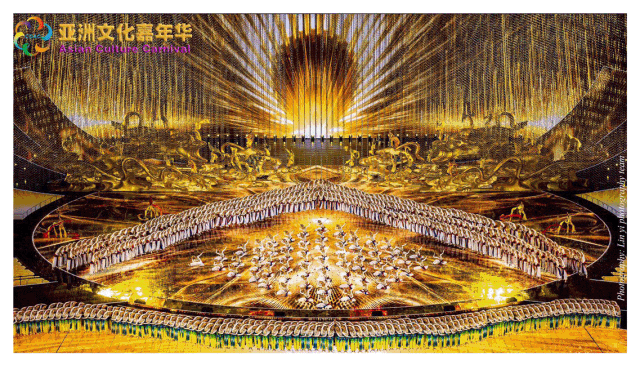
On May 15, 2019, Asian Cultural Carnival was held in “Bird’s Nest”.
Focusing on two-wheel drive of culture and technology, “Bird’s Nest” imports the first-grade performing arts activities and high-end exhibitions at home and abroad, develops a series of characteristic cultural and creative products, and offers resident performances themed with “Bird’s Nest Peking Opera Style”, thereby satisfying the general public with more effective cultural supply.
Resident performances themed with “Bird’s Nest Peking Opera Style”
Beijing National Aquatics Center creates art exhibition sub-brand of “Art Water Cube” and cultural performance sub-brand of “Dream Water Cube”, originates Art Season of “Hello Moon”, joins hands with the Palace Museum to launch Cultural and Creative Joint Exhibition of “From Skating Painting to Ice Cube”, and becomes a bridge for cultural and artistic exchanges at home and abroad.
Art Season of “Hello Moon” in “Water Cube”
In addition, BSAM and China Unicom maintain strategic cooperation in smart venue construction of Beijing National Stadium, Beijing National Aquatics Center and National Speed Skating Oval. Both parties will jointly build 5G+ smart venues, create an important platform to demonstrate China’s scientific and technological strength, and contribute to building Beijing into a scientific and technological innovation center.
Just now! BSAM joins hands with China Unicom and announces the plan for joint construction of smart venues for the Beijing Winter Olympics
Olympic Legacies Will Benefit Citizens
In line with the philosophy of “fruits of the Olympic Games for all the people”, the post-Games operations of “Bird’s Nest” and “Water Cube” adhere to the people-centered approach and have carried out a large number of mass sports activities with high popularity among the people.
Beijing National Stadium cooperates with related professional organizations to jointly launch “Bird’s Nest Cup” Youth Football Invitational, Youth Baseball League Games, Children’s Track and Field Games and other self-owned brand public welfare activities. In addition, Beijing National Stadium and Beijing Athletic Association jointly launch the 5-year public welfare event of “Youth ‘Bird’s Nest’ Track and Field Sports Classroom”, invite 100,000 Beijing primary and middle school students to visit the Bird’s Nest for free in batches, and popularize professional sports knowledge on track and field.
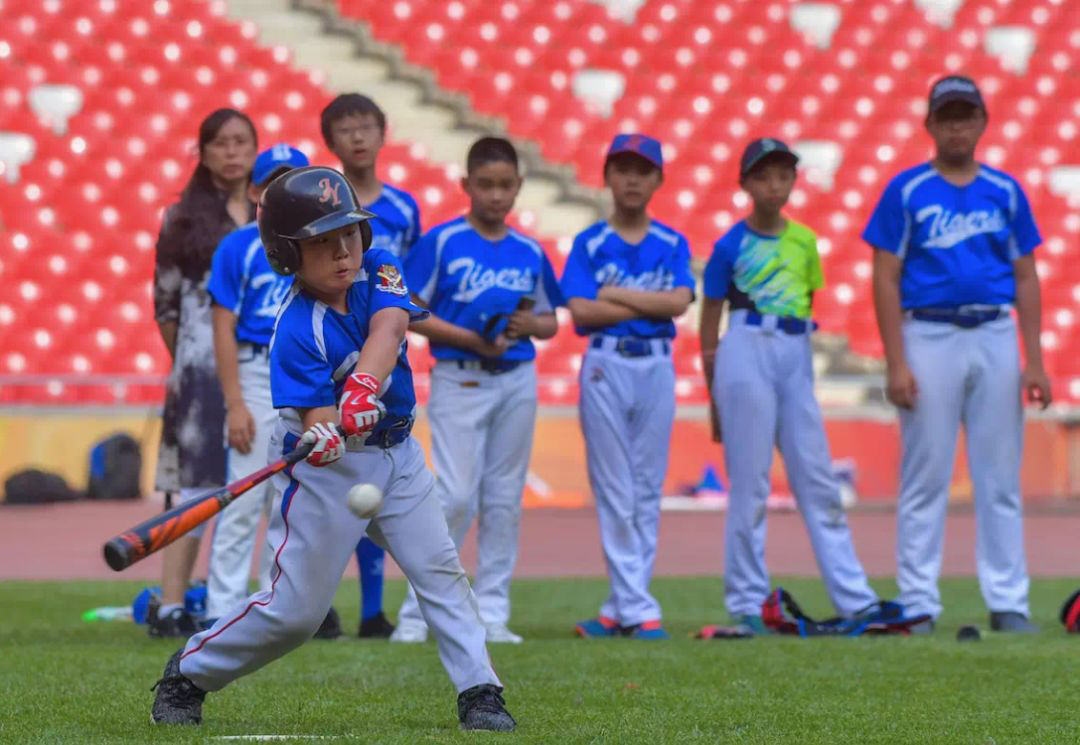
Bird’s Nest Youth Baseball Invitational
Beijing National Aquatics Center promises for “facilitating the people’s daily life with Olympic quality” and has received more than 2.5 million swimmers. It also gives swimming training courses for many primary and middle schools and kindergartens. Waterpark is also a recreational sports place for citizens and visitors to spend the summer at leisure. The Olympic venues can be described as “generalists on the international arena and in the people’s daily life.”
The unusually popular Waterpark
As an important scenic spot in the tour of New Beijing, “Bird’s Nest” has shifted from traditional sightseeing tour to Olympic cultural tour, profound tour and experience tour. The large-scale “Impressive Symphony” Audiovisual Bird’s Nest Light Show at night brings the unique audiovisual enjoyment to visitors during summer vacation time.
The large-scale “Impressive Symphony” Audiovisual Bird’s Nest Light Show 2019
“Water Cube” has been covered by annual pass of Beijing-based parks. Its public-welfare cultural exhibition area of more than 3,000 square meters is open to visitors for free. The thematic exhibitions, such as “National Park of China” and “APEC Tour”, have been highly praised by visitors.
“APEC Tour” in “Water Cube”
The public welfare attributes are fully proved by both Olympic venues. “Love Without Borders—International Charity Sale” has been held in “Bird’s Nest” over years. “Water Cube” has continuously held Young Overseas Chinese Visit and Tour Event for “Root-seeking Journey” and independently organized Care for Autistic Children by “Illuminating Blue Light”. A special fund has been established to effectively help autistic patients. Meanwhile, multi-themed public welfare cultural activities are also held, such as care for the disabled, disaster relief, poverty alleviation, energy conservation and consumption reduction.
Care for Autistic Children by “Illuminating Blue Light” launched by “Water Cube”
Francis Gabet, Director of Olympic Foundation for Culture and Heritage, International Olympic Committee and Director of Olympic Museum in Lausanne, comments as follows: “Beijing allows the Olympic venues to extend from the excitement of the Games to the citizens’ daily life, and even gradually integrates the Olympic Spirit into the citizens’ lifestyle. The people can continue to visit the venues and facilities, watch sports and cultural activities conveniently, and take regular physical exercises. In this way, the sport becomes an attitude and way of healthy living. I believe that the legacies of the 2022 Beijing Winter Olympics is equally worthy of expectations”.
Accelerating Cycle of the Beijing Winter Olympics
“Bird’s Nest” and “Water Cube”, which undertake the mission of “Summer/Winter Olympics”, are welcoming the advent of the 2022 Beijing Winter Olympics by striking a new pose.
As the venue for the opening and closing ceremonies of the 2022 Beijing Winter Olympics and the Winter Paralympics, Beijing National Stadium plans in advance and formulates Transformation Plan for Bird’s Nest Venue Facilities and Equipment for the Winter Olympics. Beijing National Aquatics Center has changed from “Water Cube” of the Summer Olympics Cycle to “Ice Cube” of the Winter Olympics Cycle. In the competition hall, the function of curling field is newly added through this reconstruction project, making “Water Cube” the first to combine ice sport and aquatic sport in the history of the Olympic Games. Furthermore, Ice Sports Center is newly built in South Square of “Ice Cube”, with a view to popularizing curling and mass ice fitness.
↓↓↓Retrospect to Reconstruction of Water Cube Competition Hall within 1 Minute↓↓↓
On the basis of making full use of the Olympic venues inherited since 2008, BSAM strives to achieve continuous and long-term utilization of newly-built venues. As a landmark project of the Beijing Winter Olympics and the only new venue in Beijing Competition Area, National Speed Skating Oval (“Ice Ribbon”) achieves innovations and breakthroughs in terms of design concept, technical process, material selection, construction technique and ice making technology, fills the world-class technological gaps, and offers the world with a wealth of “Chinese Solutions” that can be referenced and replicable. By then, “Ice Ribbon” will form the iconic architectural complex of “Summer/Winter Olympic City” together with “Bird’s Nest” and “Water Cube”.
In the post-Games era, National Speed Skating Oval will become a multi-functional ice stadium. Following the operating mode of “sports event, mass fitness, cultural leisure, exhibition display and social benefit”, it will not only become a carrier for the memory of the Winter Olympics and the spread of health ideas, but also leave more tangible and intangible assets.
“Ice Ribbon”, which is now under construction, will become a carrier for the memory of the Winter Olympics and the spread of health ideas
In echo with 2018-22 plan of the State Sports General Administration for “Mobilizing 300 Million People to Participate in Ice and Snow Sports” , Beiao Group (a subsidiary of BSAM) joins hands with “Bird’s Nest”, “Water Cube”, Beijing Performance & Arts Group, Crystal CG Co., Ltd and CAPINFO Co., Ltd to jointly hold “Meet 2022” Ice & Snow Cultural Festival, thereby shining a new logo of Beijing as an ice and snow sports hub and going all out to accelerate “Beijing Cycle” in progress.
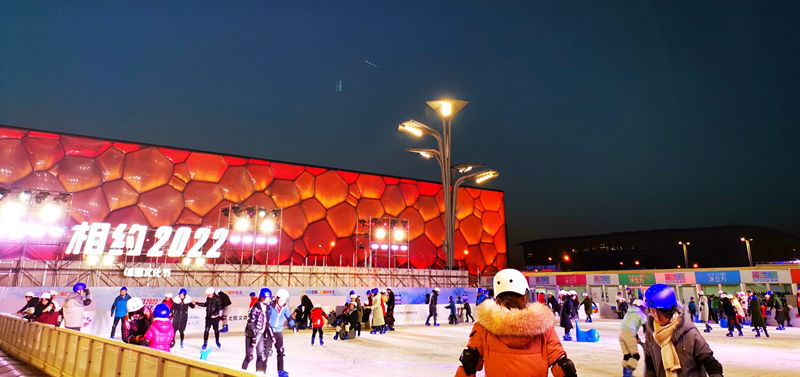
“Meet 2022” Ice & Snow Cultural Festival has become a new logo of ice and snow sports in Beijing
Yue Peng, Secretary of the CPC BSAM Committee and Chairman of BSAM, points out: “Through the construction and operation of ‘Bird’s Nest’, ‘Water Cube’ and ‘Ice Ribbon’, it is cordially expected to provide the international community with samples of “repeated, comprehensive and sustainable utilization” of Olympic venues after the Games, which is a vivid manifestation of ‘Four Confidences’ in practice. We will make every effort to make new contributions to hosting a wonderful, extraordinary and outstanding Winter Olympic Games”.
According to Thomas Bach, the incumbent President of IOC: “China has every reason to be proud of its Olympic legacy”. The post-Games operation and sustainable utilization of the Olympic venues set a new example for constructive interaction and win-win development between Olympic Movement and cities and regions, benefit the people in the long run, and blaze a path of sustainable development of superlarge-sized Olympic venues with Chinese characteristics. This approach will also impress the whole world with more brilliant chapters written by China.

